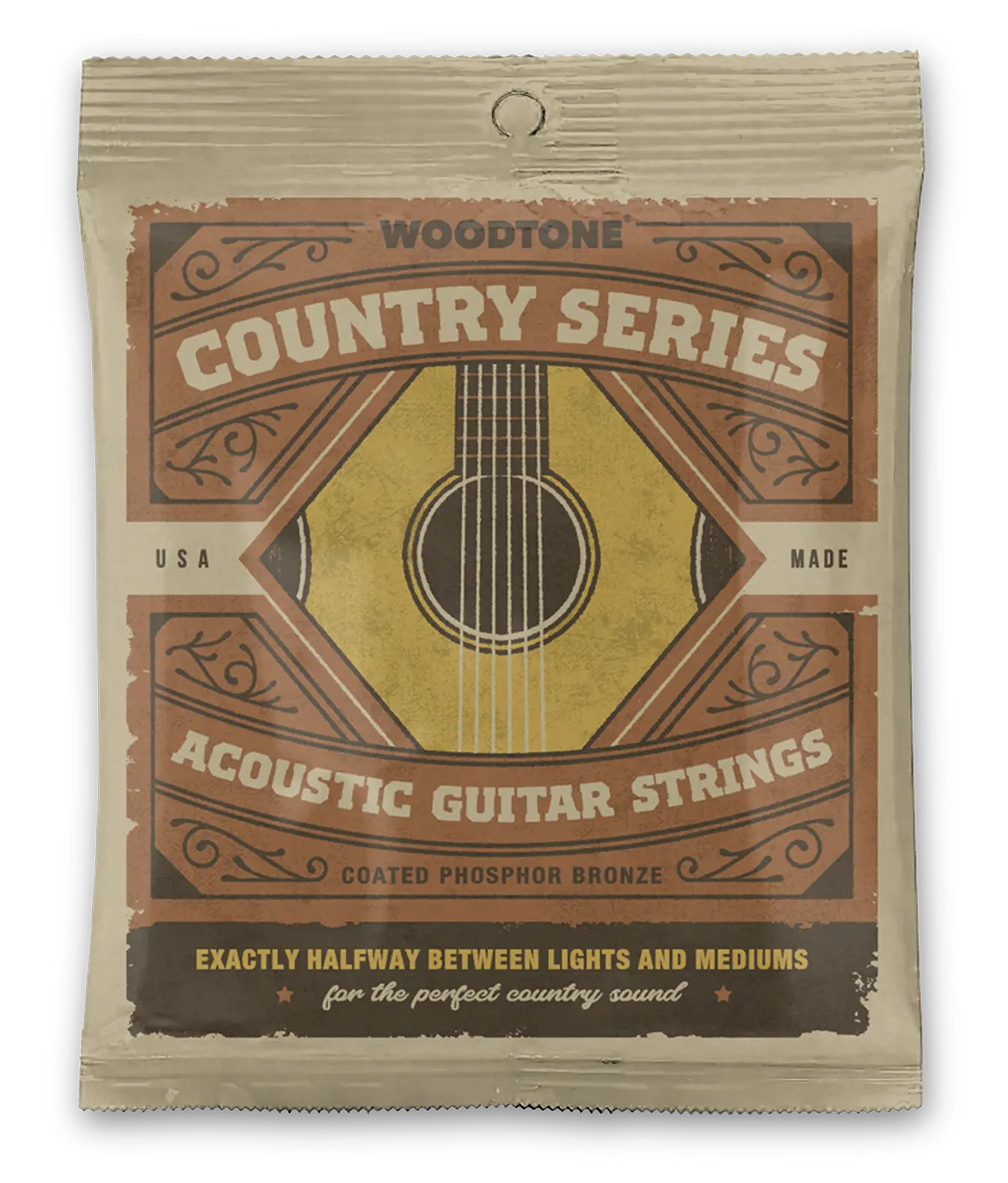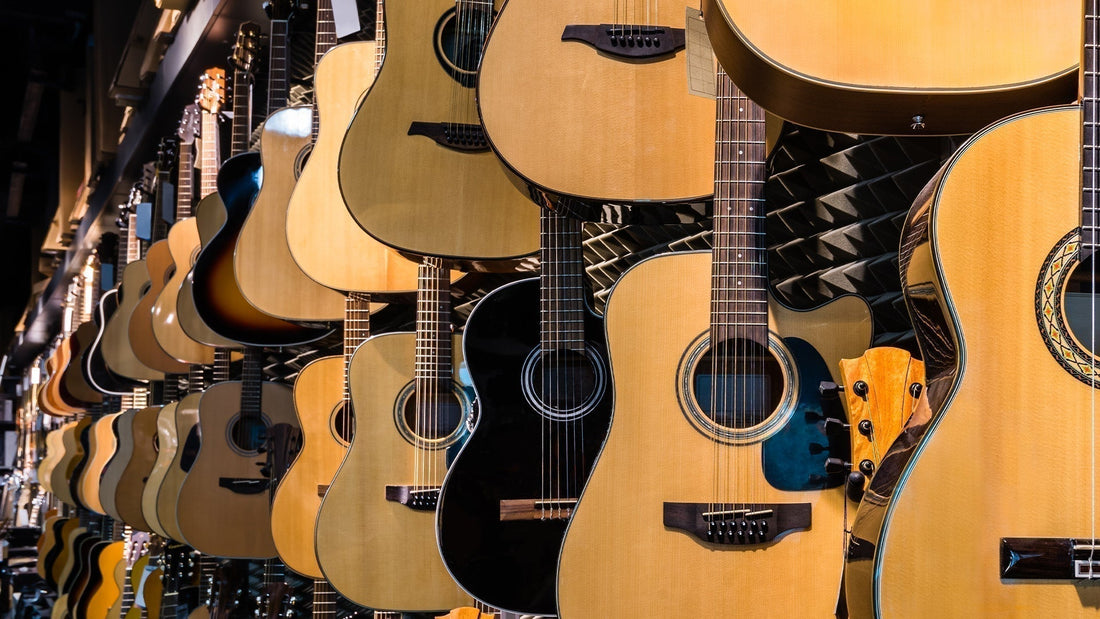One of the biggest factors in the sound and feel of an acoustic guitar is the type of wood used in its construction. But what makes one wood different from another? Why does a mahogany guitar sound warmer than a maple one?
Let’s break it all down in this beginner-friendly guide to acoustic guitar tonewoods.
Quick Links:
Why Wood Matters in Acoustic Guitars
Every piece of wood resonates differently. The type, density, and grain of a wood all affect the vibration of the strings, which shapes the tone. Some woods are more responsive and bright, while others are darker and warmer. Even the location of the wood (top, back, sides, neck, or fingerboard) plays a role.
Common Acoustic Guitar Woods (and How They Sound)
1. Spruce (Most Common for Tops)
-
Popular types: Sitka, Engelmann, Adirondack
-
Tone: Bright, clear, responsive
-
Why it’s used: Spruce is lightweight but strong, making it perfect for the soundboard (top). It responds well to different playing styles, from light fingerpicking to heavy strumming.
- Example guitar: Martin D-18 – This iconic dreadnought features a Sitka spruce top with genuine mahogany back and sides, delivering a balanced, articulate tone with a strong midrange and crisp highs. Known for its clarity and projection, the D-18 is a favorite among flatpickers, singer-songwriters, and traditionalists who want that classic Martin sound with warmth and punch.
2. Mahogany
-
Used for: Back, sides, necks, and sometimes tops
-
Tone: Warm, woody, with a focused midrange
-
Why it’s loved: Mahogany produces a mellow, balanced tone. It’s especially popular with blues, folk, and fingerstyle players who want a more intimate sound.
- Example Guitar: Martin 00-15M – This all-solid-wood guitar features mahogany for the top, back, and sides, delivering a warm, earthy tone with strong midrange presence. It’s beloved by blues, folk, and singer-songwriter players for its intimate, vintage-inspired sound and stripped-down aesthetic.
3. Rosewood
-
Used for: Back and sides (usually not tops)
-
Tone: Deep lows, sparkling highs, rich overtones
-
The vibe: Rosewood is often associated with high-end guitars. It delivers a complex, harmonically rich sound, making it great for recording and live performance.
- Example guitar: Martin HD-28 – This iconic dreadnought pairs a Sitka spruce top with East Indian rosewood back and sides, known for its lush, booming tone.
4. Maple
-
Used for: Back and sides
-
Tone: Bright, crisp, with fast note decay
-
What it’s best for: Maple has a clear, focused sound that cuts through a mix—great for live settings. It's also visually striking, often with flame or quilted grain patterns.
- Example guitar: Gibson J-200 – Often built with a Sitka spruce top and flamed maple back and sides, this jumbo guitar is a favorite for stage performers thanks to its punchy presence.
5. Cedar
-
Used for: Tops
-
Tone: Warm, soft, with a quick response
-
Why you’d choose it: Cedar has less headroom than spruce, but it shines in fingerstyle playing and soft dynamics. It’s commonly used in classical and nylon-string guitars.
- Example guitar: Cordoba C5 – A classical guitar with a solid Canadian cedar top, perfect for beginners and intermediate players looking for a warmer tone.
6. Koa
-
Used for: Top, back, and sides (especially in Hawaiian-made guitars)
-
Tone: Starts bright, mellows with age to become warm and rich
-
Aesthetic bonus: Koa is as beautiful as it is unique. Its tone matures over time, which makes it a favorite among players looking for a guitar that evolves with them.
- Example guitar: Taylor K24ce – This all-koa Grand Auditorium model blends stunning looks with a voice that gets sweeter the more you play it.
How Wood Combinations Affect Tone
Guitar builders often combine different woods for the top, back, and sides to balance tone. For example:
-
Spruce top + Rosewood back/sides = Bright attack with deep, rich bass
-
Cedar top + Mahogany back/sides = Warm, soft tone with midrange focus
-
Maple back/sides + Spruce top = Bright and articulate, great for cutting through a band mix
Does Wood Really Make a Big Difference?
Yes—but your playing style, string choice, and even how the guitar is built also factor in. A beginner might not notice subtle differences right away, but as your ear develops, you’ll start to appreciate how wood choice shapes the instrument’s personality.
Final Thoughts
Choosing the right wood isn't just about tone—it’s about connection. Do you want something warm and vintage-sounding? Or do you prefer a bright, crisp response? Think of it like picking the voice your guitar will sing with.
No matter your preference, understanding tonewoods helps you choose a guitar that feels and sounds just right for you.
Have a favorite tonewood or an experience with one you loved (or didn’t)? Drop a comment below and let’s talk wood!


